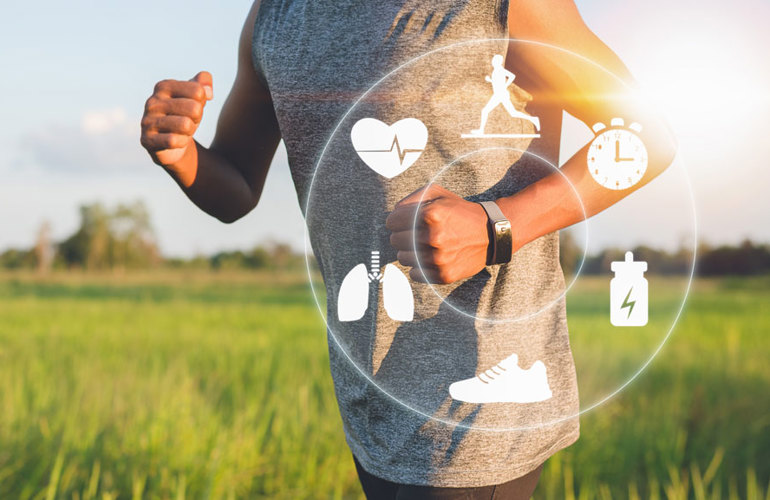
Stopain Clinical to dispens...
VIEW >

Ready, Set,..Ouch!!! Help Y...
VIEW >

Not yet a Pro Portal member? Sign up here.
Chiropractors, Physical Therapists, Massage Therapists and other Hands-On Healthcare Professionals are an essential health and wellness resource for individuals of all ages. We partner closely with these professionals on helping people perform better and move ‘pain-free’.
Our topical pain relief products were specifically formulated with these hands-on healthcare professionals (and their patients) in mind. Our fast-acting formulation with penetration enhancers plus 10% menthol, MSM, Glucosamine is like no other. Embracing hands-on healthcare professionals and topical pain relief solutions like Stopain® Clinical provides patients and their families with the ultimate wellness solution.
Visit our clinic locator to find a healthcare professional in your community.

Wearable multisensory devices ( i.e., Oura Ring, Apple Watch) are common and measure in real time a broad range of physiologic processes. Sleep quality, sleep quantity, heart rate variability (HRV), heart rate (HR), blood oxygen concentration and even electrocardiogram (ECG) findings. Let’s look at how they work and their accuracy.
The measurement of sleep quality and sleep cycles began in the 1970’s with wearable motion detectors (actigraphy) and continues to be refined today. The gold standard for sleep measurement is polysomnography (PSG) since it measures heart rate, ECG, breathing, brain wave activity, body motion and pulse oximetry. The early actigraphy devices used an algorithm to compare data from the device to norms found on PSG, thus extrapolating sleep quality. In general, these devices did, and still do, overestimate sleep time and underestimated sleep quality.
Heart rate variability (HRV) is a biomarker that when high indicates increased parasympathetic tome and when low relates to an increased sympathetic tone. HRV is essentially an indirect measure of the underlying autonomic control. Therefore, accessible home techniques to measure HRV would be desired.
HRV and many other physiologic functions are measured via photoplethysmography (PPG). PPG is an optical technique that can measure changes in blood volume and pressure in the periphery, like the wrist or finger. The wrist worn PPG sensor has a green LED light and a photodetector. The light enters the superficial capillaries and the portion reflected is absorbed by the photodetector in direct relationship to changes in blood volume and pressure. These changes are directly related to heart rate HR, both at rest and with activity.
Not only can PPG measure heart rate, PPG findings have been related to ECG and it is considered an indirect method to determine cardiac function. Therefore, the modern Dick Tracey watch can monitor your cardiac function via PPG, just not as accurate as an ECG.
In terms of sleep quality and quantity, the most accurate wearable smart devices incorporate several sensors, actigraphy (accelerometers), PPG, and pulse oximetry, and measure multiple functions such as HRV, HR, respiration, motion, ECG, temperature and oxygen concentration.
The data obtained from the device is processed in algorithms (developed in comparison to PSG findings) to extrapolate sleep cycles and quality. The addition of artificial intelligence to the newer devices is creating even greater accuracy.
In choosing a device, check the sensors, and the measurements attained. For example, the Oura Ring measures pulse rate, HRV, respiratory rate, body temperature, and nighttime movement - interestingly, HR measured at the finger is more accurate that at the wrist. The Apple Watch has multiple sensors including an ambient light sensor, multiaxial accelerometer, and PPG sensor. Finally, the newer Fitbit uses an accelerometer and a PPG sensor while the original Fitbit only used an accelerometer.
In choosing a multisensory wearable device consider the goals of the patient and then direct them to the unit with the appropriate sensors. The bottom line is the modern Dick Tracey watch can perform as an accurate real time biomarker.
Dr. Donald DeFabio is in private practice in Berkeley Heights where he hosts seminars on a multi modal approach to Chiropractic as well as a CCSP to Rehab Diplomate program. His exercise protocols can be found on his You Tube Channel that has over 37K subscribers. For more information or to subscribe to his rehab tips newsletter visit www.DeFabioDifference.com
REFERENCES:
Matthew R. Lujan MR, et al, Past, Present, and Future of Multisensory Wearable Technology to
Monitor Sleep and Circadian Rhythms, Front. Digit. Health Aug 2021, 3:721919